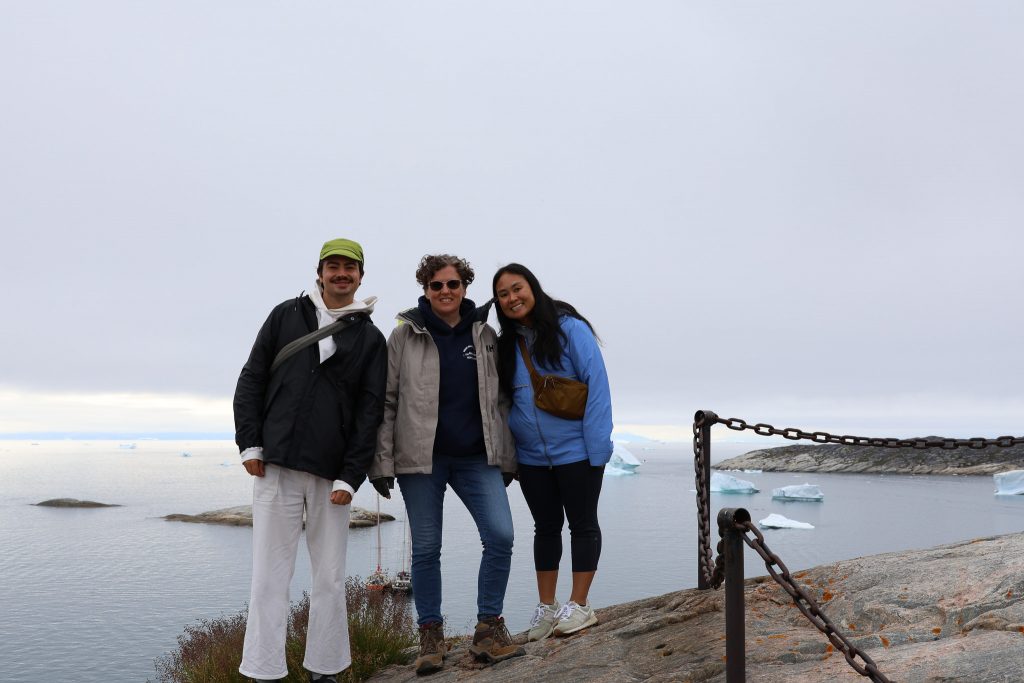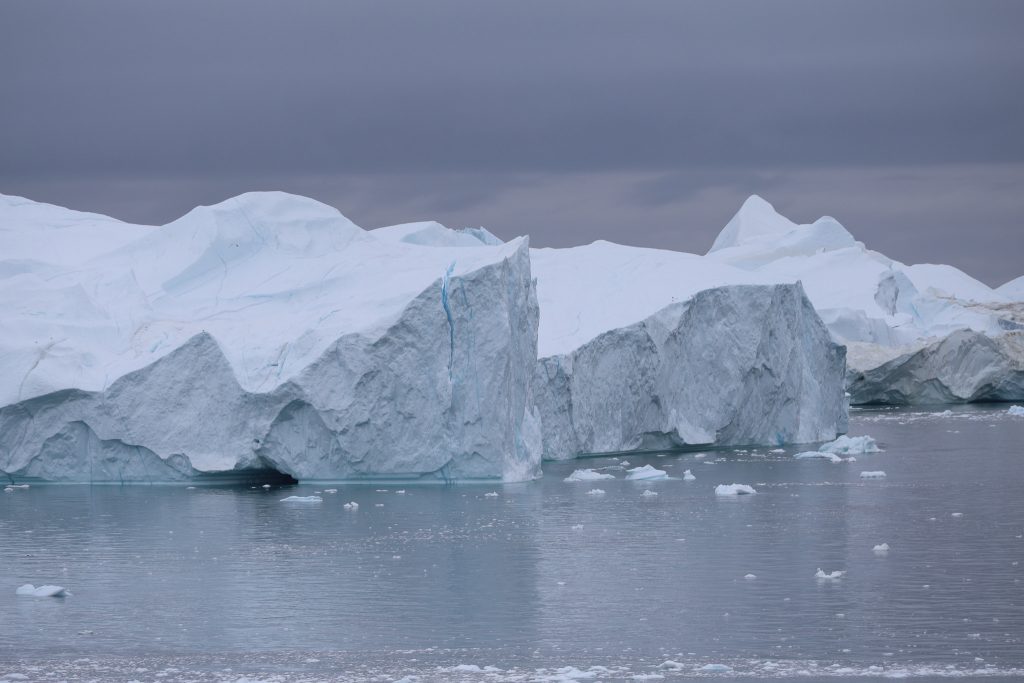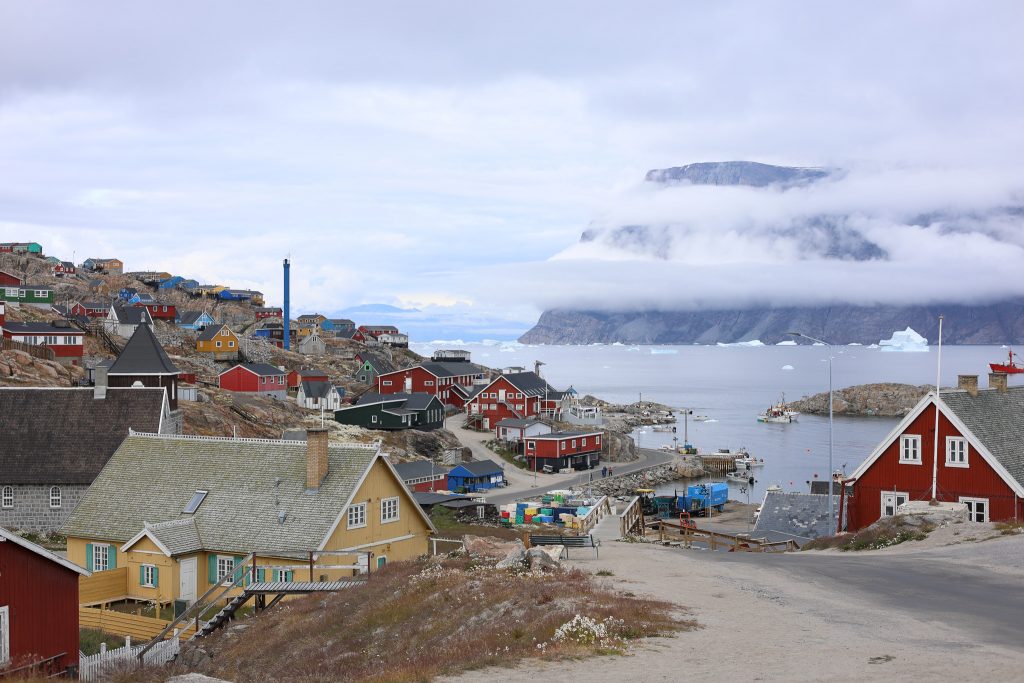
This is a dispatch from Constantino Panagopulos, a science writer at the Jackson School of Geosciences, who is documenting the TERMINUS mission to explore Greenland glaciers from underwater. The mission is led by Professor Ginny Catania and collaborators. Learn more about it here.
Exploring the world’s largest glaciers means getting scientists and their equipment to some of the most remote and least accessible places in the world. I’m learning the persistence that it takes first hand during a five-day journey from Austin to Uummannaq – a remote island on the west coast of Greenland, where a local skipper is waiting to carry our group to the research vessel Celtic Explorer.
The ship is where an expedition led by Ginny Catania, a professor at The University of Texas at Austin’s Jackson School of Geosciences, will be studying the front of the glacier from above and below the water, with a range of instruments and a car-sized submersible named NUI. Their goal is to investigate the sediments pouring out from under the ice and find out what role they play in controlling the glacier’s movement and what that means for calculating future sea level rise
But to take part, the scientists travelling with me have to get there first.
My travel companions are the Jackson School’s’ Benjamin Keisling, a glaciologist at the University of Texas Institute for Geophysics; graduate student Mikayla Pascua; and Rutgers University’s Bridget Ovall, an oceanographer. And when I met them in Austin, Hurricane Debby had already tossed our original plans to the four winds. Storm clouds over Boston, meant we’d missed our connection and although we somehow scraped our way onto the last flight to Reykjavik there was even worse ahead.

On arrival in Iceland, our lives fell into a pattern: rise at dawn, set a goal for the day, then beg, borrow and steal our way onto any flight that would take us a step closer to our destination, riding our luck and the goodwill of the airline staff we’d meet.
But encountering, travel chaos in the Arctic Circle has its benefits. There may be long lines, security checks and endless waiting on hold. But after we finally arrived in the coastal town of Ilulissat, and our plan was in motion to get to Uummannaq and onward to the ship, there was opportunity to enjoy the spectacular icy environment of Greenland and the locals’ warm hospitality.
Ilulissat attracts adventurous holidaymakers for good reason. Nearby is one of the world’s largest and fastest flowing glaciers, which is also the main outlet through which the Greenland ice sheet drains. Each day it disgorges vast chunks of ice that creak and crack as they drift to the open ocean while tourist-laden boats bob among pods of whales. The glacier is also a reminder of the impacts of global warming: in the last 20 years it has retreated further than it had in the previous 150 years.

On Uummannaq, ice-covered mountains disappear into a blanket of cloud that leave you feeling you’ve stumbled on another world. The island is named after the heart-shaped peaks that tower over the tiny settlement’s colorful buildings, fishing boats and dogsleds.

This far out come only the most determined travelers, and of course scientists, who use it as a base to conduct research on nearby glaciers.
At last, on the afternoon of day five, two days late, three bags lighter (lost in the transit from Reykjavik to Ilulissat) and after what feels a lifetime of travel, we met our skipper Paaluk at the port, boarded his runabout and set out for the Celtic Explorer.
This is the first dispatch on the mission. To see the rest, check them out on the TERMINUS mission blog.
